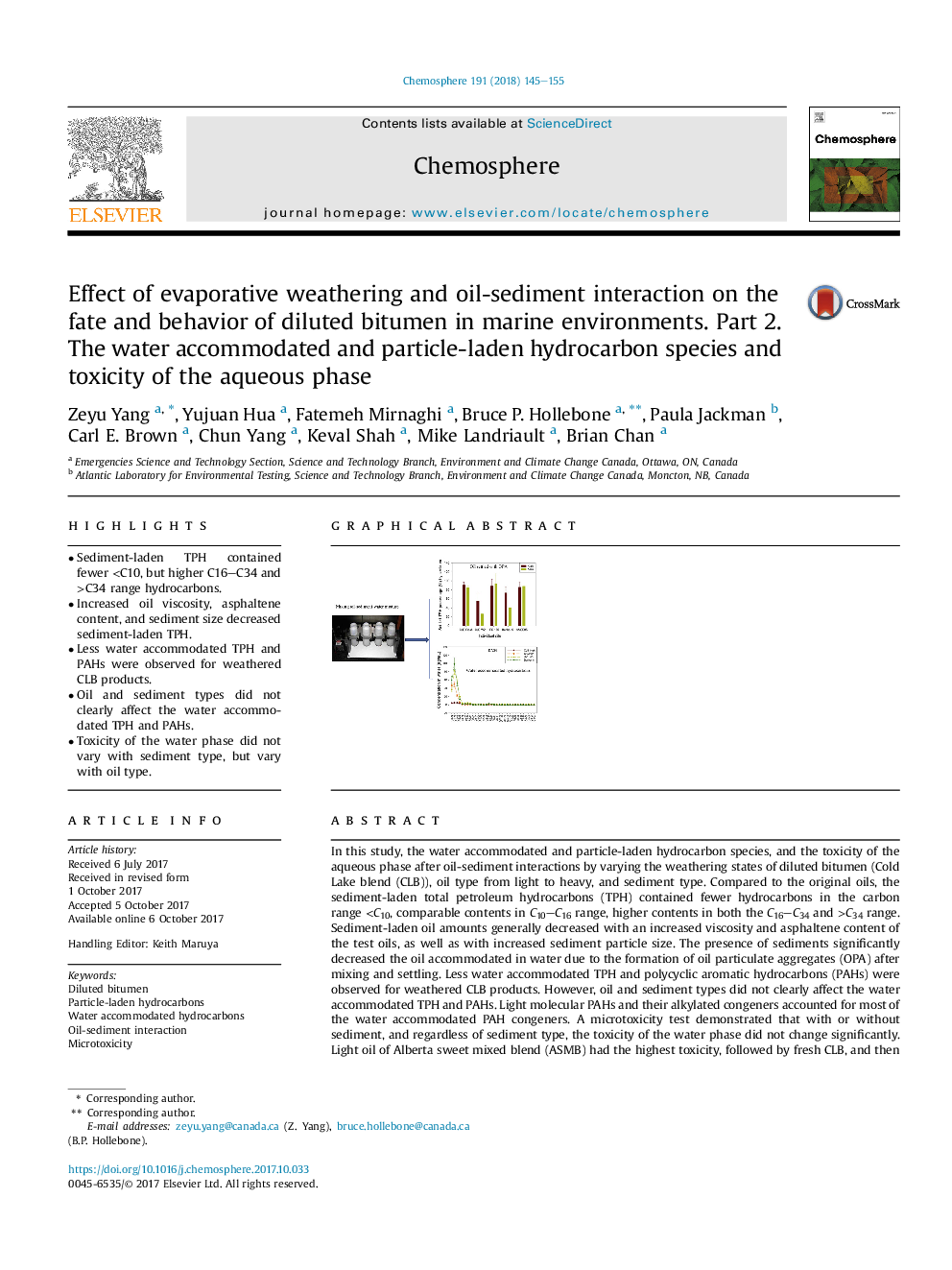| کد مقاله | کد نشریه | سال انتشار | مقاله انگلیسی | نسخه تمام متن |
|---|---|---|---|---|
| 5745707 | 1412413 | 2018 | 11 صفحه PDF | دانلود رایگان |
- Sediment-laden TPH contained fewerÂ
- Increased oil viscosity, asphaltene content, and sediment size decreased sediment-laden TPH.
- Less water accommodated TPH and PAHs were observed for weathered CLB products.
- Oil and sediment types did not clearly affect the water accommodated TPH and PAHs.
- Toxicity of the water phase did not vary with sediment type, but vary with oil type.
In this study, the water accommodated and particle-laden hydrocarbon species, and the toxicity of the aqueous phase after oil-sediment interactions by varying the weathering states of diluted bitumen (Cold Lake blend (CLB)), oil type from light to heavy, and sediment type. Compared to the original oils, the sediment-laden total petroleum hydrocarbons (TPH) contained fewer hydrocarbons in the carbon rangeÂ
151
Journal: Chemosphere - Volume 191, January 2018, Pages 145-155
